| Understanding the available treatment options for vein disease is crucial for effectively managing symptoms and improving your vein health. From non-surgical approaches to minimally invasive procedures, there are various options to explore. Consult with Advanced Vein & Laser Center to determine the most appropriate vein treatment plan for your specific condition and take proactive steps towards healthier veins. |
Vein disease affects millions of people worldwide. If you’re dealing with vein disease, it’s important to understand the available treatment options to alleviate symptoms, improve vein health, and enhance your overall well-being.
In this blog post, we will address some frequently asked questions about vein disease treatment options, providing you with the information you need to make informed decisions about your vein health.
What is Vein Disease?
Vein disease, also known as venous disease or venous insufficiency, refers to a group of conditions that affect the veins, impairing their normal functioning.
Veins are responsible for carrying deoxygenated blood back to the heart, and when the veins are affected by disease, it can lead to various symptoms and complications. Common vein diseases include:
- Varicose Veins: Varicose veins are enlarged, twisted veins that are often visible under the skin. They commonly occur in the legs and can cause symptoms such as pain, aching, swelling, and a heavy or tired feeling in the legs. Varicose veins develop when the valves within the veins, which help prevent blood from flowing backward, become weakened or damaged, resulting in blood pooling and vein dilation. Learn more about varicose veins.
- Spider Veins: Spider veins are smaller, dilated blood vessels that appear near the surface of the skin. They typically appear as thin, red, or purple lines and can resemble a spider web or tree branches. Spider veins are often asymptomatic but can cause cosmetic concerns for some individuals.
- Chronic Venous Insufficiency (CVI): CVI occurs when the valves in the leg veins do not function properly, leading to poor blood flow from the legs back to the heart. It can result in symptoms such as leg pain, swelling, skin changes (such as discoloration or thickening), and the formation of ulcers in severe cases.
- Deep Vein Thrombosis (DVT): DVT is a condition characterized by the formation of blood clots in the deep veins, commonly in the legs. It can cause pain, swelling, warmth, and redness in the affected area. If a blood clot dislodges and travels to the lungs, it can lead to a potentially life-threatening condition called pulmonary embolism.
Factors That Influence Vein Disease?
Vein disease can be influenced by various factors, including:
- Genetics
- Age
- Obesity
- Prolonged sitting or standing
- Hormonal changes (such as during pregnancy)
- History of blood clots.
Diagnosis of vein disease typically involves a physical examination, medical history review, and imaging tests like ultrasound.
What Treatment Is Available For Vein Disease?
Treatment options for vein disease depend on the specific condition and severity but can include lifestyle modifications (such as exercise and leg elevation), compression therapy, medication, minimally invasive procedures (like sclerotherapy or endovenous ablation), or surgical interventions.
Seeking medical advice from Advanced Vein And Laser Center is crucial for an accurate diagnosis and appropriate treatment plan.
Non-surgical Vein treatment options
Non-surgical treatment options are often the first line of approach for managing vein disease. They include:
- Compression Therapy: The use of compression stockings or socks to improve blood flow and reduce symptoms like swelling and pain.
- Lifestyle Modifications: Adopting healthy habits such as regular exercise, maintaining a healthy weight, elevating the legs, and avoiding prolonged periods of standing or sitting.
- Self-Care Practices: Practices like leg elevation, regular exercise, avoiding tight clothing, and keeping the legs uncrossed can help improve blood circulation and reduce discomfort.
Minimally Invasive Treatment Options
Several minimally invasive procedures are available for treating vein disease. These procedures are performed on an outpatient basis and typically require little to no downtime. They include:
- Sclerotherapy: A procedure in which a solution is injected into the affected veins, causing them to shrink, close off, and eventually be reabsorbed by the body.
- Endovenous Laser Ablation (EVLA): A procedure that uses laser energy to heat and seal off the affected veins, redirecting blood flow to healthier veins.
- Radiofrequency Ablation (RFA): Similar to EVLA, RFA uses heat generated by radiofrequency energy to close off diseased veins.
- How do these minimally invasive procedures work?
Minimally invasive procedures like sclerotherapy, EVLA, and RFA work by targeting the affected veins directly, causing them to collapse or close off. This reroutes the blood flow to healthier veins, relieving symptoms and improving overall vein health. The procedures are typically performed under local anesthesia and involve minimal discomfort.
Frequently Asked Questions About Vein Treatment?
Q: How long does it take to see results after vein disease treatment?
The timeline for seeing results varies depending on the type and severity of the vein disease, as well as the specific treatment used. Some patients may experience immediate relief of symptoms, while others may notice gradual improvements over several weeks or months. Your healthcare provider will discuss the expected timeline for results based on your individual case.
Q: How do I know if I need vein treatment?
A: If you experience symptoms such as pain, swelling, heaviness, or fatigue in your legs, visible varicose veins or spider veins, or if you have a family history of vein problems, it may be beneficial to consult with a vein specialist. They can evaluate your condition, conduct diagnostic tests, and determine if vein treatment is necessary. It is important to seek medical advice to receive an accurate diagnosis and appropriate treatment recommendations.
Q: How long does vein treatment take? A: The duration of vein treatment depends on the specific procedure being performed and the extent of the vein condition. Some treatments, such as sclerotherapy for smaller veins, may take only 15 to 30 minutes per session. Other treatments like endovenous laser treatment (EVLT) or radiofrequency ablation can take about 45 minutes to an hour. The number of sessions required for optimal results may vary based on individual circumstances and the severity of the vein condition.
Q: What is the recovery like after vein treatment?
A: Recovery after vein treatment is generally quick and well-tolerated. Minimally invasive procedures typically allow for a speedy return to normal activities. Patients may be advised to wear compression stockings for a specified period to support healing and promote optimal blood flow. Mild bruising, swelling, or tenderness in the treated area is common but usually resolves within a few weeks. Your healthcare provider will provide specific aftercare instructions and guidelines tailored to your treatment.
Q: Will vein treatment be covered by insurance?
A: Coverage for vein treatment varies depending on several factors, including your insurance plan and the medical necessity of the treatment. In some cases, vein treatment may be covered if it is deemed medically necessary due to symptoms or complications. It is recommended to contact your insurance provider directly to understand your coverage, including any pre-authorization requirements or documentation needed.
Q: Are vein treatments permanent?
A: The effectiveness and longevity of vein treatments can vary depending on the type of treatment, the severity of the vein condition, and individual factors. Some treatments, such as sclerotherapy or laser treatments, can provide long-lasting results. However, it is important to note that new veins may develop over time, and additional treatments may be required for optimal results. Maintaining a healthy lifestyle, including regular exercise and proper leg elevation, can also help prevent the recurrence of vein issues.
Q: Are there any risks or side effects associated with vein treatment?
A: Like any medical procedure, vein treatments carry some potential risks and side effects. These can include temporary bruising, swelling, mild discomfort, or changes in skin color around the treated area. In rare cases, complications such as infection, blood clots, or skin burns may occur. However, serious complications are relatively rare. It is essential to discuss the potential risks and side effects with your healthcare provider before undergoing any vein treatment.
Q: Can vein treatments improve the appearance of spider veins?
A: Yes, vein treatments can be effective in improving the appearance of spider veins. Sclerotherapy, for example, is commonly used to treat spider veins by injecting a solution directly into the affected veins, causing them to collapse and fade over time. Laser treatments, such as pulsed dye laser or intense pulsed light therapy, can also target spider veins and reduce their visibility. However, it is important to consult with a vein specialist to determine the most appropriate treatment option for your specific situation.
Q: Can I undergo vein treatment if I am pregnant?
A: It is generally not recommended to undergo vein treatment while pregnant. Pregnancy can cause significant changes in hormone levels and blood volume, which can impact the effectiveness and safety of vein treatments. Additionally, some treatments, such as sclerotherapy, may involve the use of chemicals or medications that may not be suitable during pregnancy. It is advisable to wait until after childbirth and consult with a healthcare professional to discuss the best course of action for vein treatment.
Q: Can vein treatments be performed on any part of the body?
A: Vein treatments can be performed on various parts of the body, depending on the type of vein condition being addressed. Common areas for treatment include the legs, as varicose veins and spider veins often occur in this region. However, vein treatments can also be used on other areas, such as the hands or face, to address visible veins or vascular malformations. The suitability of treatment on specific body parts will be determined based on the individual’s condition and the expertise of the healthcare provider.
Seek Treatment From The Leading Vein Specialists in York & Lancaster, PA.
At every stage of your vein issues, it’s important to see a professional to help you in healing vein disease and achieve a life of normalcy and physical comfort.
Not only can they help you finally heal this condition, but they can also treat the vein issues that caused them in the first place. Visit one of our centers for an in-depth appointment and put your vein troubles to rest.
Ready to book your appointment? Give us a call today.

Dr. Steven Heird, MD, is a distinguished specialist in the treatment of venous disease and vascular surgery. As one of the dedicated doctors at the Advanced Vein and Laser Center, located in York and Lancaster, Pennsylvania, Dr. Heird has made a significant impact in the field of vein care. His expertise and commitment to patient well-being have earned him a trusted reputation among his peers and patients. Dr. Heird’s work at the Advanced Vein and Laser Center reflects his passion for providing compassionate and effective vein care, improving the lives of those he serves with precision and care.
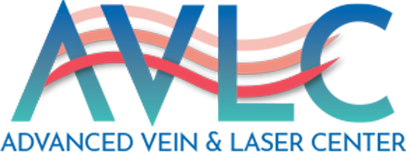

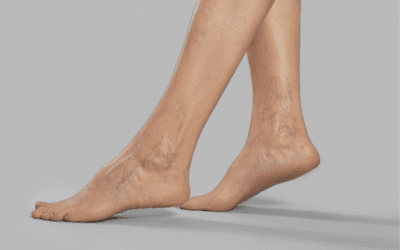
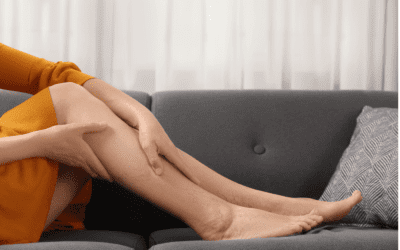

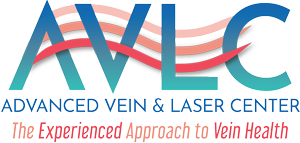
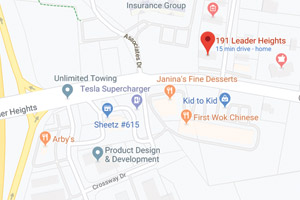
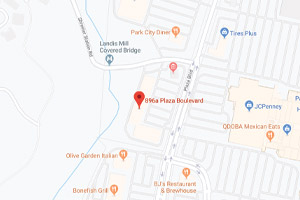
0 Comments